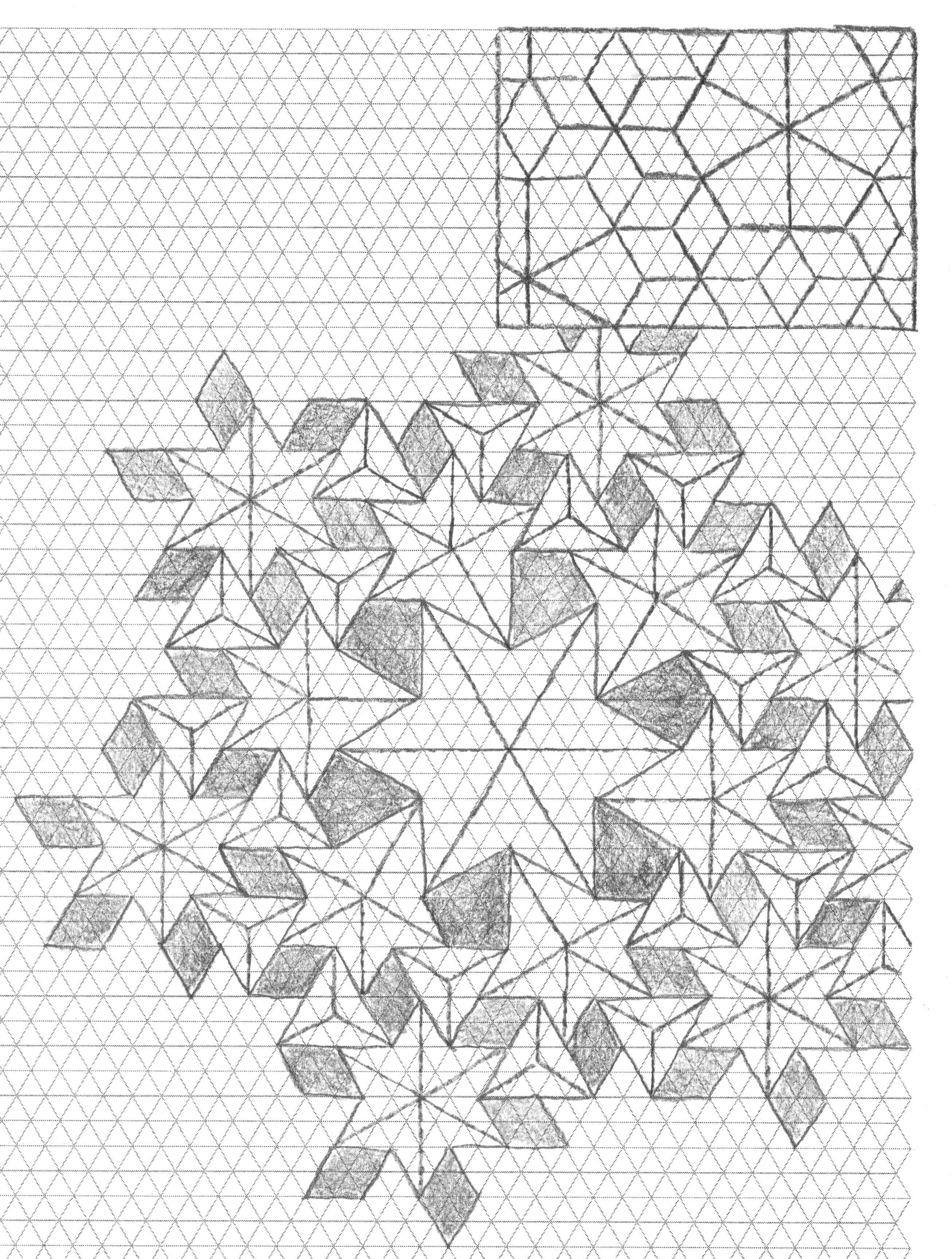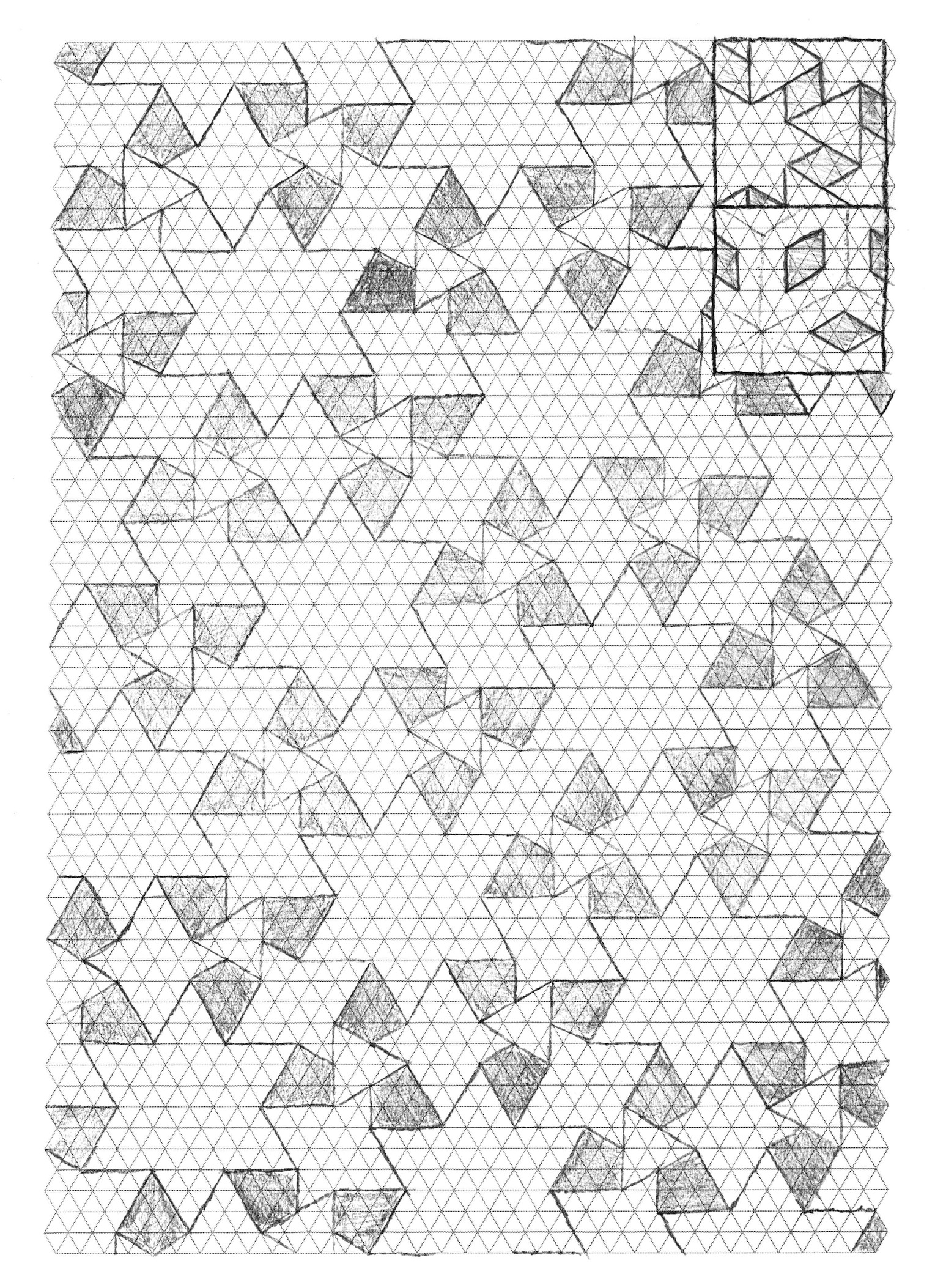Arms of Shiva, flagstone version (crease pattern)
This is a crease pattern of one of my designs[1][2] (which for the sake of convenience I have dubbed ‘Arms of Shiva’.) However, this takes that design and throws it through the flagstonization machine, hinge-pleating all the folds to make the pattern you see above. While it might look like it is very wasteful of space (it is) there’s still less wasted paper doing it via this method than our normal straight pleat-and-twist methodology. Go figure! I would love to see this folded, in case there’s anyone out there feeling intrepid enough to give it a try… (update: I folded it, eventually!)

